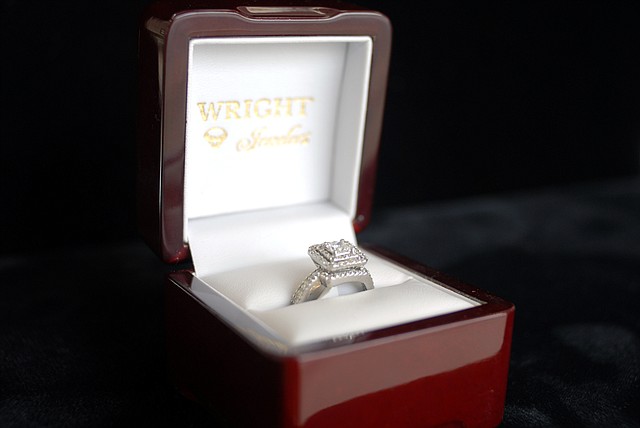Finding the perfect engagement ring
Tuesday, May 11, 2010
Women dream about the moment. Men stress over finding the perfect stone. And Beyonce made it a focus in her hit song "Single Ladies," prompting women all over the world to raise their left hands.
Behold, the engagement ring.
Despite a rise in diamond prices and a thinning of wallets in a recession, research indicates that grooms are increasingly spending more to, as Beyonce crooned, "put a ring on it."
According to a 2009 study by Bride magazine, the average cost of an engagement ring has increased 43 percent from 2006 to $6,348 from $4,435.
"Clearly the sparkle -- and value -- of diamonds has captured the attention and wallets of couples who are keen on making a significant investment when it comes to engagement rings," said Michelle Preli, editor-in-chief of Brides.com.
Locally, jewelers said the economy isn't dampening couples' desire for wedding bling.
"There are certain things in life you have to have. Food, health care. And if you're getting married you have to have diamond rings and wedding bands," said Jeremy Kennedy of Kennedy Jewelers on East Main Street.
Approval of friends
Other area jewelers also noted that grooms are often willing to spend more than they originally planned to find a ring.
Travis Stewart, a Chattanooga resident who recently proposed to his fiancee, said the shopping process is part research and part guesswork.
"I was a little nervous because I wasn't really sure what she would like," he said. "The one I ended up getting, I knew beyond a shadow of doubt that was the one," he said of the carat and a half, princess-cut 18K white gold, Tiffany-setting ring he purchased for simplicity and elegance.
"She's gotten approval from all of her friends," Mr. Stewart said with a laugh.
Tina Clark of Fred Meyers Jewelers on Hamilton Place Boulevard, who has been in the business since 1993, said she has seen change in the process of how rings are selected.
"Women are often leading the way and back then brides almost never came in," she said. "And now she usually comes in first."
Couples are also taking advantage of trade-in policies, which for certain rings allow them to buy a ring that they later trade for another one, providing it is double in price, only paying the difference, Ms. Clark said.
Jewelers also note a shift in preference for the size and types of materials.
Bob Groves, a salesman at Wright Jewelers on East Brainerd Road, said men are increasingly wanting titanium and tungsten for their bands.
DIAMONDS * About $8.5 billion worth of diamonds a year come from African countries.* About a million people are employed by the diamond industry in India.* 74 governments are committed and legally bound to eradicating conflict diamonds, or those said by the United Nations to originate in areas where anti-government rebel groups fund their operations with diamonds.* Diamonds account for 33 percent of the gross domestic product (about $3.3 billion) of Botswana.Source: Diamondfacts.org
"The guys like the color and the durability of the band," he said, adding that they also cost less than gold options.
Mr. Kennedy said grooms are increasingly buying rings starting at one carat instead of a half carat as in the past.
World supply weakens
However, grooms could be paying more for engagements rings as early as next year.
De Beers, the world's largest diamond producer, recently announced it plans to scale back production, according to The Financial Times.
"Diamonds are a treasure of nature that should be protected because there will be less to sell. The reality is that supply cannot keep up, and that will become very accentuated over the next 15 years," Gareth Penny, managing director for the company, is quoted as saying.
According to the Financial Times, the increase in Asian demand for diamonds combined with the company's failure to find new deposits will cause production to decline from 48 million carats a year to 40 million carats starting next year. The reduction in output could cause prices to increase.
"We always have that concern over the prices," Mr. Groves said. "Nowadays there's not a whole lot we can do, so it transfers to the consumer. We're fortunate that we sell other items that help us."
"Bridal is the backbone of most jewelry stores -- everything else is gravy on top," he said.
Continue reading by following this link to a related story:

